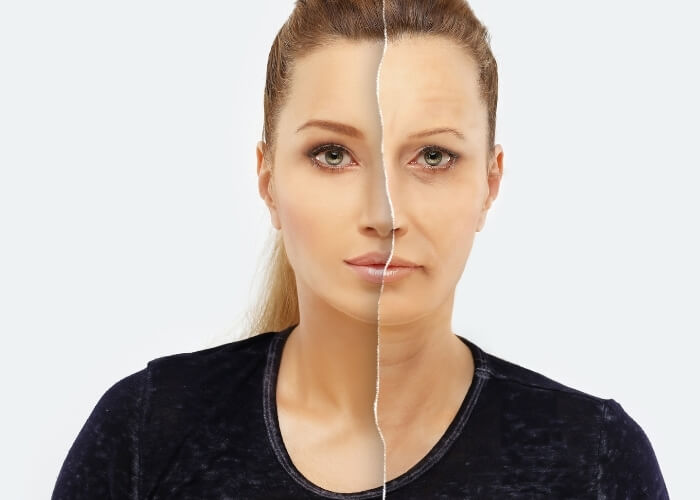You may have heard conflicting evidence regarding whether sun exposure is good or bad for your health. Health advice is constantly changing as the scientific community finds new evidence of health benefits for everything from wine to green tea. While sun exposure is the leading cause of skin cancer, it is also required for vitamin D synthesis and to ward off winter blues.
Enjoying a little sunlight every day is not harmful. In fact, it can boost and stabilize your mood. At the same time, we should be mindful that too much sun can be dangerous for your skin.
Sunlight helps address seasonal affective disorder (SAD) and winter blues
Seasonal Affective Disorder is the type of depression that occurs during winter months when there is less natural light. It often ends by spring or early summer. The exact cause, though unknown, is believed to be a lack of sunlight. Seasonal affective disorder is different from the winter blues. Winter blues are waves of low emotions that do not impair one’s daily life. Seasonal affective disorder, which occurs because of lack of stimulation of the hypothalamus (a part of brain that helps control circadian rhythm, which is the body’s internal 24-hour sleep-wake clock), causes depression that affects daily activities. A chemical imbalance occurs due to lack of sunlight, which results in less serotonin and more melatonin. Serotonin is the chemical that lifts your mood.

The criteria for diagnosing seasonal affective disorder are:
- common symptoms of major depression
- coincides with fall and winter months
- experience over a minimum of 2 years
Common symptoms include losing interest in activities that you’ve enjoyed, sleep issues, feeling worthless, changes in weight or appetite, feeling agitated or sluggish, and trouble recalling and remembering things.
SAD is more common in people who live far north or south of the equator where there is noticeably less light during fall and winter.

Light therapy and/or antidepressants may be prescribed by your doctor for SAD. Additional interventions that can help you address seasonal affective disorder and winter blues include:
- Sleep hygiene
- Keep a regular sleep schedule and sleep only as much as you need.
- Avoid caffeinated beverages after lunch.
- Avoid alcohol near bedtime.
- Do not go to bed hungry.
- Make sure your bedroom environment is conducive to sleep.
- Exercise regularly, preferably 4 to 5 hours before bedtime.
- Two hours prior to your desired time of starting sleep, avoid or minimize light exposure. Blue light from televisions and computer monitors may especially affect sleep.
- Enhance indoor lighting
- Incorporate some form of aerobic exercise after checking with your doctor. Whether an elliptical trainer, swimming or cycling, aerobic exercises have proven to improve symptoms of depression.
- Daily walks outside, even on cloudy days, can be remarkably effective in improving symptoms.
Sun exposure is effective for vitamin D production in the skin
Vitamin D, which is essential for healthy bones and several other important functions in the body, is generated in the skin with the influence of sunlight. Sun exposure triggers vitamin D production between the months of March and October at 42 degrees latitude or more north.
Make sure to spend some time in the sun. At the same time, be careful not to burn your skin or overdo the sun exposure. Always protect your skin by wearing sunscreen before your skin starts to turn red or burn. The amount of sun you need for synthesis is achieved in the exposure of just minutes not hours. So, it is important to protect to avoid both sun damage and skin cancer.

Skin damage or premature aging of the skin with sun rays
Premature aging of the skin also called “photoaging”, can occur with exposure to sunlight. When unprotected skin is exposed to ultraviolet light there are changes at the skins’ cellular level. If the damage involves deeper layers of the skin, called the dermis, it can take years before the damage resurfaces and is visible on the skin.
Symptoms of sun damage include:
- Wrinkling
- Pigmentation such as age spots and freckles
- Even skin texture
- Broken capillaries
- Redness
- Blotchiness
Good sun protection is key to preventing sun damage. Make sure you use broad-spectrum sunscreen, which will shield your skin from both UVA and UVB rays. Be sure to use a sun protection factor (SPF) of 30 or higher.
Skin cancer and sunlight
Ultraviolet radiation from the sun can cause damage to skin cells’ DNA. When this damage builds up over time, cells start growing uncontrollably and create cancer.
Getting sunburn can increase your risk of cancer. People with light skin who burn more easily are more prone to developing skin cancer. Skin cancer can appear as an abnormal area of skin, which may be red, swollen, pink, peeling, thick, crusty, or an open sore.
It is important to protect yourself with:
- Proper clothing for sun protection
- Broad spectrum sunscreen with sun protection factor (SPF) at 30 or higher
- Reapply sunscreen every few hours if in the sun
- Stay out of the sun in the middle of the day
- Avoid tanning beds
Sun allergy (Photosensitivity)
Some people experience an intense immune reaction, commonly causing an itchy rash. The rash is often seen in the sun-exposed regions of the body. It occurs when our immune system recognizes some components of the sun-altered skin as “foreign,” and attacks it.
In conditions such as Lupus, and the use of certain medications, including Sulfonamides, the skin reaction may be severe. It can produce skin rashes, sometimes including blisters.
The bottom line
Some exposure to the sun can be beneficial to create a chemical balance in the brain and improve your mood, especially during wintertime. But too much exposure can negatively impact the skin, causing sun damage, aging, and an increased risk of skin cancer.
Do not let sun exposure consequences take away from spending the time at the beach during summertime, or time with your family in the backyard unless your doctor has advised you to not spend any time in the sun. Make sure you and your loved ones are properly protected from the sun with sunscreen, a hat, sunglasses, and an umbrella. Then enjoy creating more fun-filled memories!


